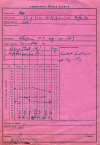EIGHTY YEARS OF ELECTROCONVULSIVE THERAPY IN CROATIA AND IN SESTRE MILOSRDNICE UNIVERSITY HOSPITAL CENTRE
- PMID: 34177059
- PMCID: PMC8212646
- DOI: 10.20471/acc.2020.59.03.13
EIGHTY YEARS OF ELECTROCONVULSIVE THERAPY IN CROATIA AND IN SESTRE MILOSRDNICE UNIVERSITY HOSPITAL CENTRE
Abstract
In 1937, Ugo Cerletti and Lucio Bini performed electroconvulsive treatment (ECT) in Rome for the first time. That was the time when different types of 'shock therapy' were performed; beside ECT, insulin therapies, cardiazol shock therapy, etc. were also performed. In 1938, Cerletti and Bini reported the results of ECT. Since then, this method has spread rapidly to a large number of countries. As early as 1940, just two years after the results of the ECT had been published, it was also introduced in Croatia, at Sestre milosrdnice Hospital, for the first time in our hospital and in the then state of Yugoslavia. Since 1960, again the first in Croatia and the state, we performed ECT in general anesthesia and continued it down to the present, with a single time brake.
Keywords: Croatia; Electroconvulsive therapy; General anesthesia; History; Hospital.
Figures




References
-
- Swartz CM. Electroconvulsive and neuromodulation therapies. NY: Cambridge University Press; 2009.
Publication types
MeSH terms
LinkOut - more resources
Full Text Sources
Research Materials
